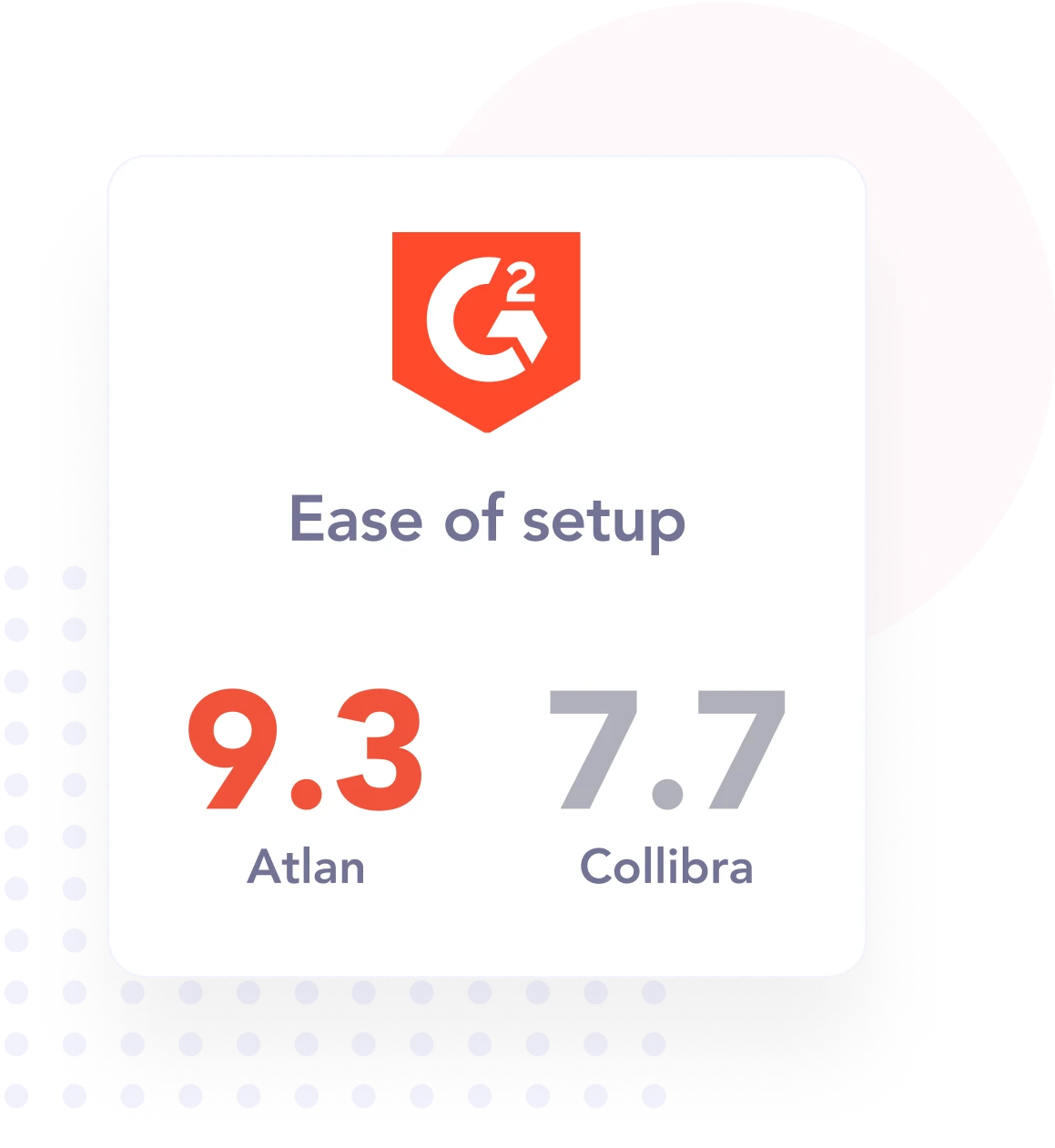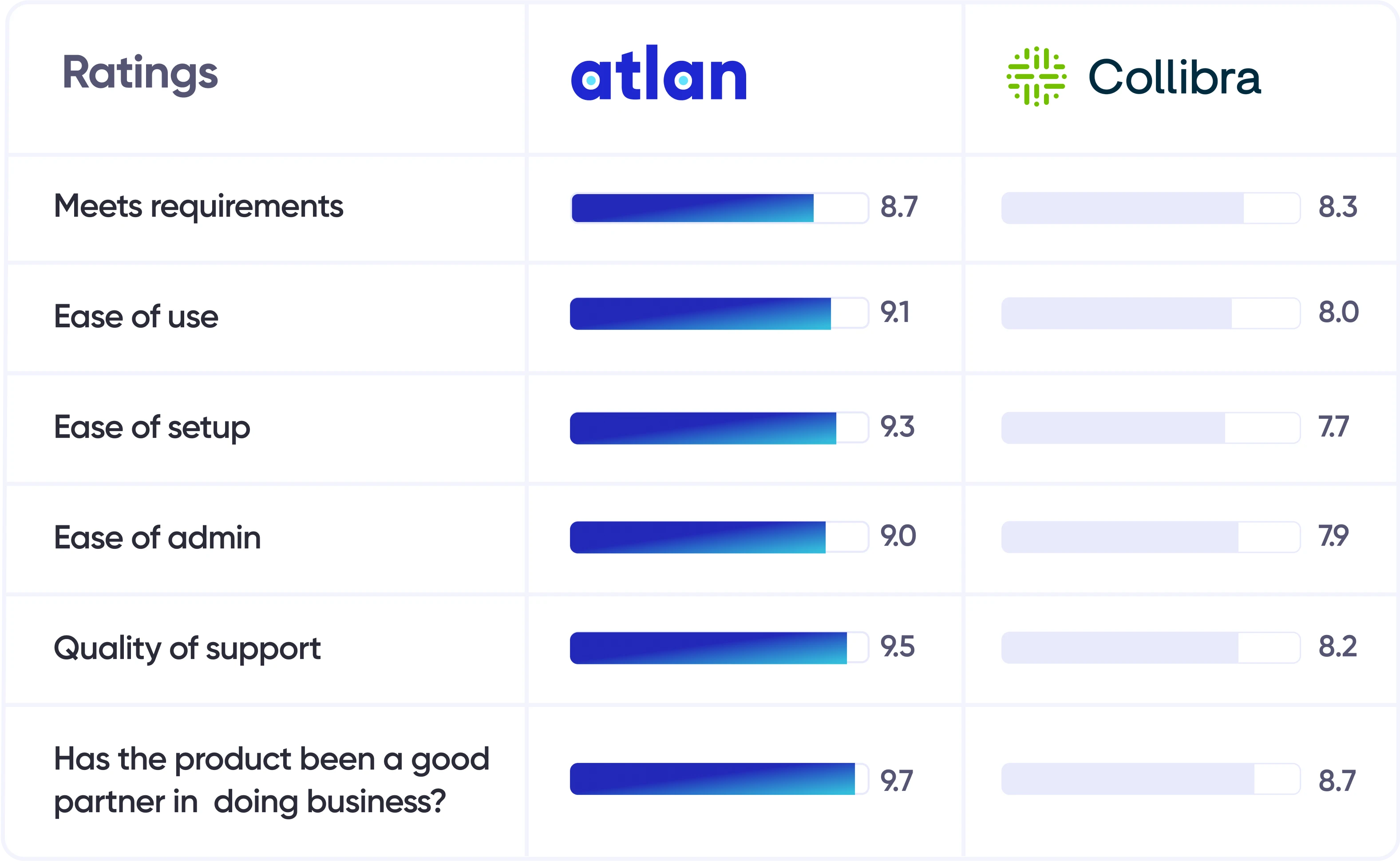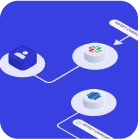Collibra
vs Atlan
vs Atlan


Collibra vs Atlan: Why 75% of data teams chose Atlan after evaluating both platforms
- Automation first product actions for faster time-to-value
- Robust and automated column-level lineage for end-to-end visibility of data estate
- Adoption-centric design for viral use and business engagement in the enterprise
- Configurable to meet diverse needs (personas, tech stack, use cases etc.) of data teams
- Extensible and open platform for driving advanced programmatic metadata use cases
- Partner not vendor approach to make customers successful in their critical business initiatives
Collibra vs Atlan:
Which Drives Better Business Outcomes?
Here's a quick overview of how Collibra and Atlan compare in terms of driving business value
| Factor |  |  |
|---|---|---|
| Enabling self-service analytics across your org | Not the easiest to use, and no easy way to collaborate with data experts | Non-technical users typically start self-serving their data requests within a month of deployment |
| Encouraging adoption across your org | Non-intuitive UI/UX and poor product experience, leading to poor adoption | Intuitive collaboration-focused UI/UX, any type of user can hit the ground running |
| Ease of setting up | Setup requires 4 months or more, need implementation support experts | DIY setup, typically in weeks |
| Time to experience actual value | Long time to value, often taking a year or more, after a cumbersome multi-month deployment cycle. The major roadblock to realizing value is the lack of adoption | First metadata-driven value is in a matter of weeks not months. Easy adoption by diverse stakeholders makes value inevitable |
| Keeping pace with how you grow as a business | May not handle change well. Legacy platform, a closed solution, incapable of supporting modern paradigms like data mesh, data fabric and data-as-a-product. | Is open to change in your stack and growth. Open-by-design, cloud-first, Kubernetes-based platform with natively built-in microservices. Supports modern frameworks like data mesh, data fabric, data-as-a-product |
| Bringing visibility into your entire data estate | Focused on the breadth of integrations vs depth of integrations. Better for on-prem integrations, but not good for cloud-native modern tools | Deep integrations with cloud-native modern tools. Cloud-first, cloud-native platform as core DNA. Connects to major on-prem providers and others in roadmap |
| The overall cost of deployment and maintenance | Prohibitive costs due to high people cost and implementation costs. Relies on manual stewardship to enrich assets, needing a large team. For a large organization, this cost can easily come out to 6x of the cost of the tooling itself. Also requires an SI expert familiar with the platform to set it up successfully. This cost alone can run north of $1M for large organizations. | Setup and maintenance costs are low, as it embraces an automation first and cloud first modern approach in tool setup and maintenance |
Collibra vs Atlan:
Which solution is the most future ready?
Collibra and Atlan are two generationally different products. Collibra is a traditional data governance tool. Atlan is an active metadata platform.
Here are some key differences in how the platforms are being built:
| Factor |  |  |
|---|---|---|
| Forward looking architecture | Static closed platform that operates in silos | Open, scalable, tech-debt-free platform, suited for modern paradigms like data fabric and data mesh |
| Active governance | Manual stewardship governance model | Programmatic governance through metadata activation |
| AI/ML capabilities | Very limited AI/ML product capabilities | Atlan AI powering use cases like auto documentation at scale, auto generate SQL using natural language, natural language lineage summaries, AI-copilot etc. |
Why Yape chose Atlan over Collibra
Yape is a fast-growing payment app from Financial Services holding company Credicorp, offering a P2P digital wallet to more than 13 million users across Peru.
Collibra vs Atlan:
The long and short of it
Collibra is a traditional data governance tool, while Atlan is a pioneering active metadata platform. Atlan is not just rated over Collibra in terms of product functionality, but also in product vision, innovation roadmap, and market approach. The company focuses on constant innovation and partnering with customers to generate value.


Find out why 96% of customers are
most likely to
recommend Atlan.
Book a Demo →


















